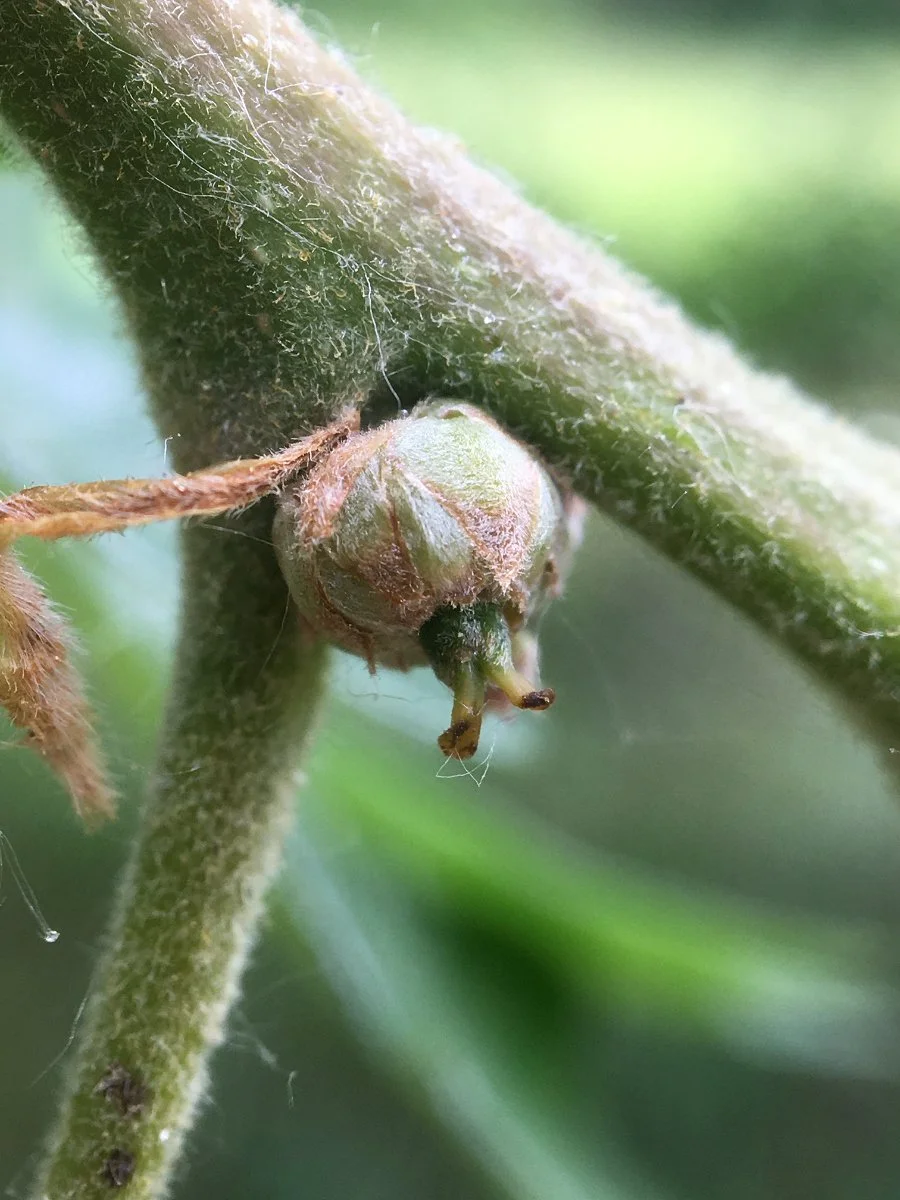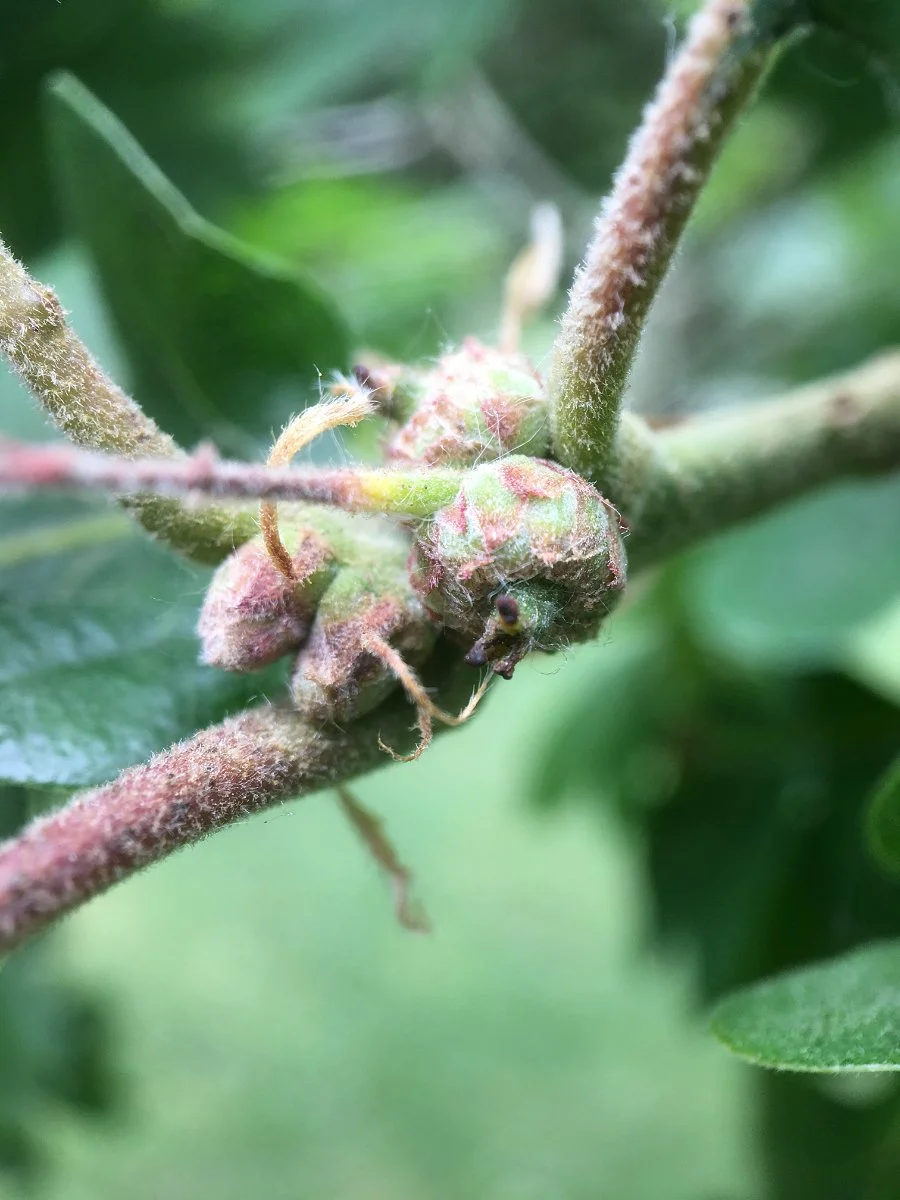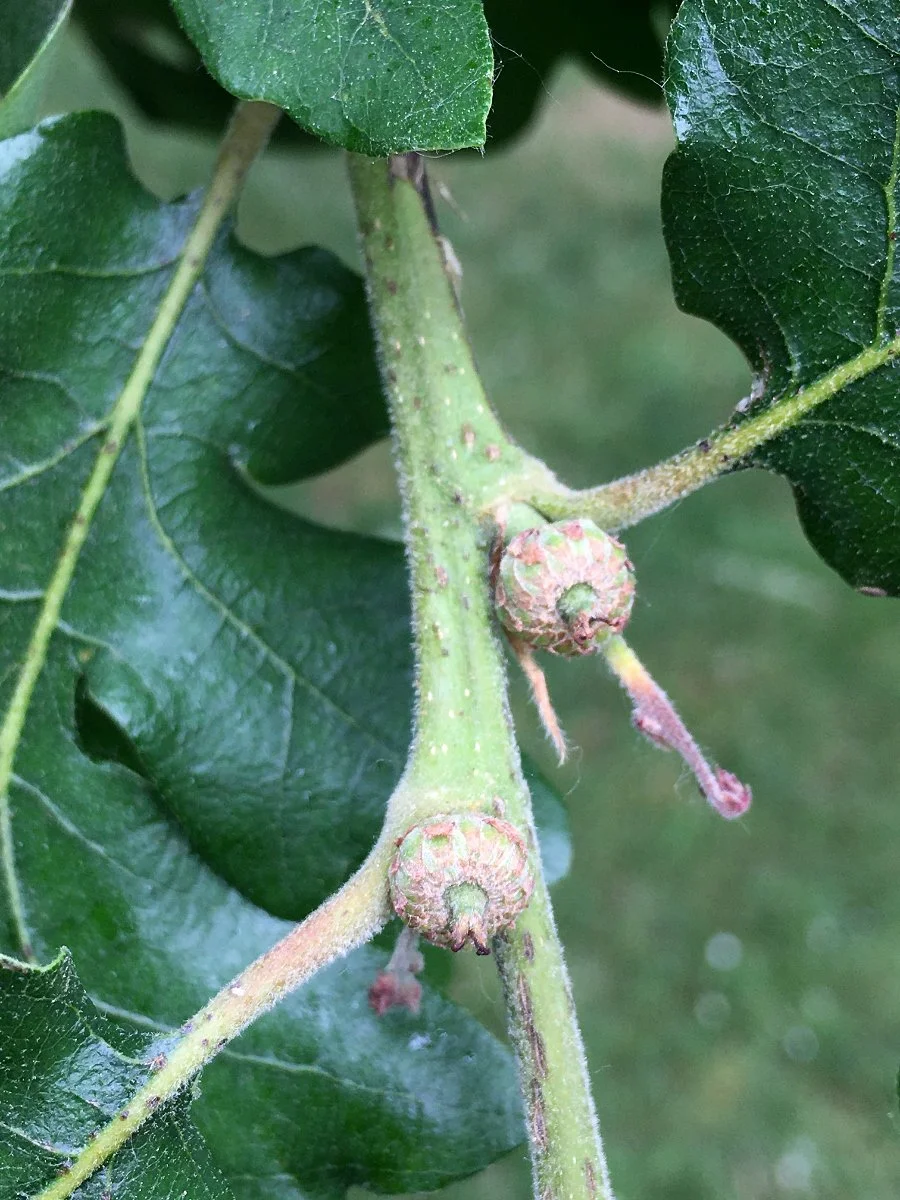This evergreen perennial is in the orchid family, and its leaves are the most striking part. They have an electrifying white pattern set on a deep blue-green background. They are thick and supple and cool to the touch. The flowers are dull-white to greenish and grow on a long, terminal, hairy spike with most of the flowers interestingly oriented to one side. The plant grows from short creeping rhizomes, and like to live in coniferous forests in a shady, dry to moist habitat.
I am not sure of the flowering cycle of this plant, but I have only seen it bloom once over the last three years. That said, the flowers are small and subtle and can easily be overlooked. The flower petals are succulent and fleshy to the touch, and even though they are in the shade, I find it interesting that they are blooming in the middle of the dry, hot summer. I have been visiting them all week wondering if any pollinators would show up. So far I haven’t seen any.




























































